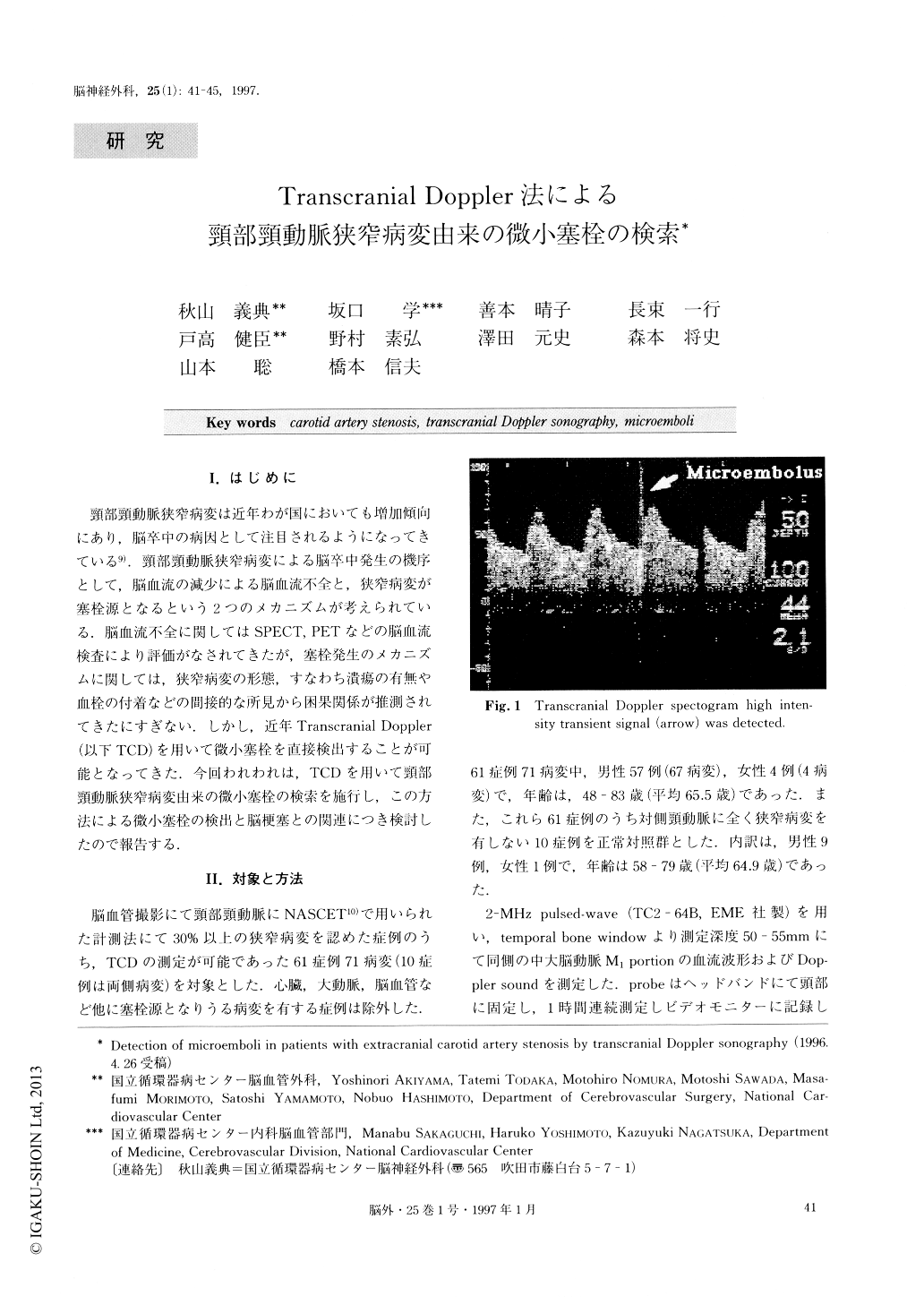Japanese
English
- 有料閲覧
- Abstract 文献概要
- 1ページ目 Look Inside
I.はじめに
頸部頸動脈狭窄病変は近年わが国においても増加傾向にあり,脳卒中の病因として注目されるようになってきている9).頸部頸動脈狭窄病変による脳卒中発生の機序として,脳血流の減少による脳血流不全と,狭窄病変が塞栓源となるという2つのメカニズムが考えられている.脳血流不全に関してはSPECT,PETなどの脳血流検査により評価がなされてきたが,塞栓発生のメカニズムに関しては,狭窄病変の形態,すなわち潰瘍の有無や血栓の付着などの間接的な所見から困果関係が推測されてきたにすぎない.しかし,近年Transcranial Doppler(以下TCD)を用いて微小塞栓を直接検出することが可能となってきた.今回われわれは,TCDを用いて頸部頸動脈狭窄病変由来の微小塞栓の検索を施行し,この方法による微小塞栓の検出と脳梗塞との関連につき検討したので報告する.
Embolism from a stenotic lesion of the extracranial internal carotid artery (ICS) is considered to be an im-portant pathomechanism of cerebral infarction. The purpose of this study is to estimate the risk of cerebral infarction associated with microembolism in patients with ICS and thereby to determine the importance of TCD-detected microemboli in this condition. Seventy-one cases with more than 30% ICS and 10 cases with-out ICS were studied. TCD monitoring was carried out for an hour at the ipsilateral middle cerebral artery of each case using a 2-MHz pulse-wave transcranial Dop-pler device. High intensity transient signals were counted as microemboli. Microemboli were detected in 27 of 71 cases with ICS, but not in cases without ICS.Microemboli were detected more frequently in cases with 70% to 99% ICS (53.3%) compared with in cases with 30% to 69% ICS (12.5%). Cerebral infarctions were recognized in the ipsilateral hemisphere in 23 of 27 cases with microemboli (85.2%) by means of MRI. In contrast, cerebral infarctions were recognized only in 21 of 45 cases without microemboli (47.7%). These re-sults suggest that a stenotic lesion of the extracranial internal carotid artery, especially high-grade stenosis, is a major source of cerebral embolism and that detection of microemboli by TCD is a useful tool capable of reli-ably assessing the risk of cerebral infarction due to ICS.

Copyright © 1997, Igaku-Shoin Ltd. All rights reserved.


